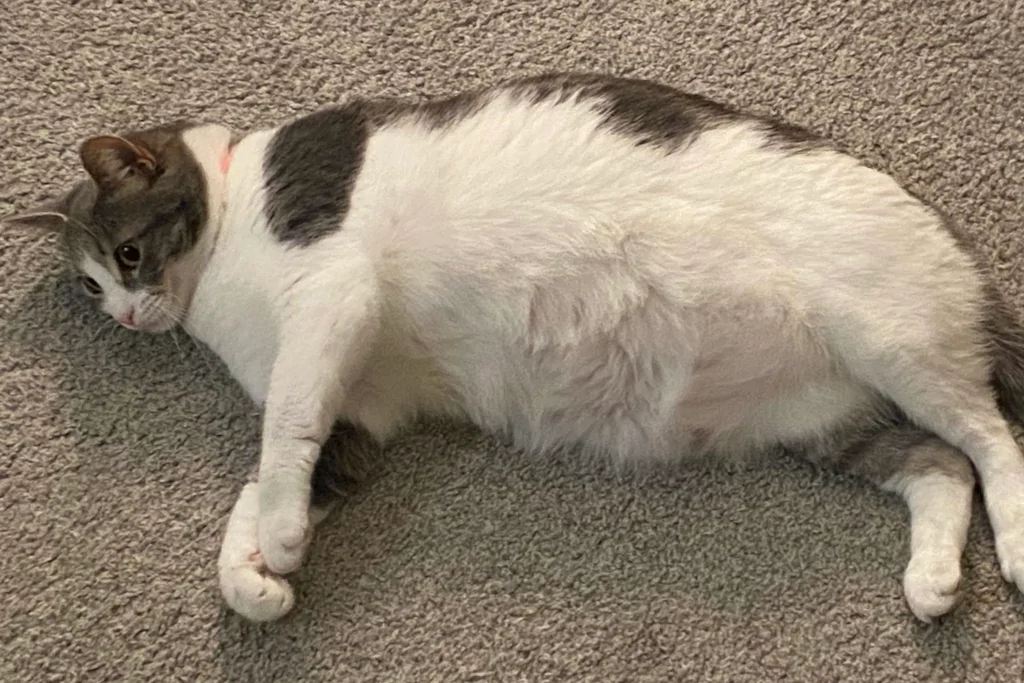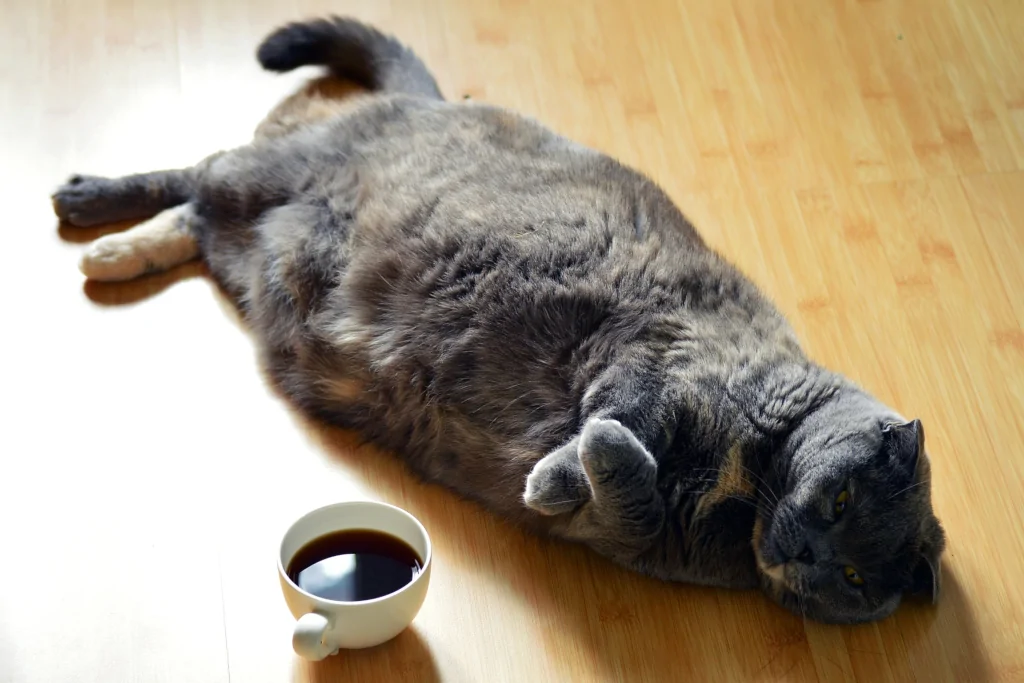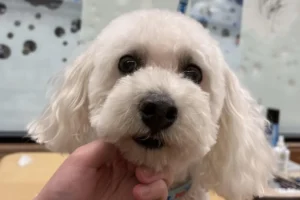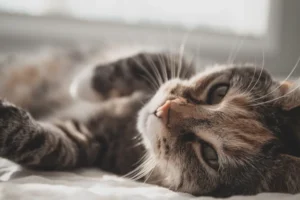Disclosure: We may earn a commission from helpful, relevant links in our content. No cost to you. See our privacy policy.
Sneaky treats and deceptive fluff are two culprits that make it challenging to recognize when our feline companions are tipping the scales.
It’s all too easy to let those extra treats slip in or miss the signs of weight gain in our fluffy companions.
I remember the day I realized my dear Smokey had packed on a few too many pounds. I could no longer feel his ribs when I gently petted his side, and he seemed less enthusiastic about his usual playtime.
We all want our cats to lead happy, healthy lives, and understanding the risks of obesity and how to address them is an essential part of responsible pet ownership. So, let’s dive into the world of feline weight management and discover how to keep our cats in tip-top shape.

What Are the Dangers of Obesity in Cats?
Obesity in cats is a growing concern, and it can lead to a variety of health issues that could significantly affect their quality of life.
Overweight and obese cats are at higher risk for developing conditions such as diabetes, heart disease, joint pain, and even a decreased life expectancy.
Additionally, carrying extra weight can put unnecessary strain on their organs, making it harder for them to breathe and move around comfortably.
Addressing obesity early is key to preventing these complications and ensuring your cat stays healthy and active for years to come.
Identifying if Your Cat Is Overweight or Obese
Determining whether your cat is overweight or obese is crucial for taking the right steps to address the issue. Here are a few practical and easy-to-follow tips to help you assess your cat’s weight:
Body Condition Scoring
A common method to evaluate a cat’s weight is by using the Body Condition Score (BCS), which is a scale from 1 to 9, with 1 being underweight and 9 being severely obese. A healthy cat should have a BCS of around 4 to 5.
Here’s a body condition score for cats:

To assess your cat’s BCS, you can follow these steps:
- Feel the ribs. Gently run your hands along your cat’s ribcage. In a healthy cat, you should be able to feel the ribs without pressing too hard, but they shouldn’t be visible. If you can’t feel the ribs at all, or if they’re very prominent, your cat might be overweight or underweight, respectively.
- Check the waistline. Observe your cat from above. A cat with an ideal weight should have a visible waistline, where their body narrows between the ribcage and hips. An overweight or obese cat may lack a waist or even have a rounded appearance.
- Inspect the abdomen. Look at your cat from the side. A healthy cat should have a slight tuck in the abdomen, without any sagging or bulging. A protruding or hanging abdomen can be a sign of excess weight.
I recall when I first assessed Smokey’s BCS, I was shocked to find that I couldn’t feel his ribs without pressing quite hard. I also noticed that his waistline had disappeared, and his abdomen was slightly sagging. That’s when I knew it was time to take action.
Consult Your Veterinarian
If you’re still unsure about your cat’s weight, it’s always a good idea to consult with your veterinarian. They can provide a professional assessment of your cat’s weight, as well as personalized recommendations for addressing any issues.

Diet and Nutrition: Managing Your Cat’s Weight
Managing your cat’s weight through diet and nutrition is a vital aspect of keeping them healthy and preventing obesity. Here are some practical and insightful recommendations to help you ensure your cat maintains a healthy weight.
Choose the Right Food
Selecting the appropriate food for your cat plays a significant role in weight management. Consider the following factors when choosing cat food:
- Age and life stage. Cats have different nutritional requirements at various stages of life. Make sure the food you choose is specifically formulated for your cat’s age, whether they’re a kitten, adult, or senior.
- Activity level. Active cats may require more calories than sedentary ones. Choose a food that matches your cat’s energy needs based on their lifestyle and activity level.
- Special dietary needs. If your cat has any health issues, consult your veterinarian for recommendations on the appropriate diet.
When I realized Smokey needed to lose weight, I switched him to a high-quality, lower-calorie food designed for adult cats with indoor lifestyles. The specific product I switched him to was this Hill’s Science Diet indoor adult cat food. This change, combined with portion control, made a significant difference in his weight management.
Practice Portion Control
Overfeeding is a common cause of obesity in cats. To manage your cat’s weight, be mindful of portion sizes:
- Read the label. Check the recommended feeding guidelines on the cat food package, and adjust the portions according to your cat’s age, weight, and activity level.
- Measure accurately. Use a measuring cup or kitchen scale to ensure you’re providing the correct amount of food for your cat.
- Divide meals. Instead of leaving food out all day, consider dividing your cat’s daily food allowance into multiple smaller meals to promote healthy digestion and prevent overeating.
Monitor Treat Intake
Treats can be a significant source of extra calories for your cat. Keep these tips in mind when giving treats:
- Choose low-calorie treats. Opt for treats with fewer calories and more nutritional value.
- Limit frequency. Treats should make up no more than 10% of your cat’s daily caloric intake. Be mindful of how often you’re giving treats to avoid weight gain.
- Use treats as a reward. Treats can be an effective tool for positive reinforcement during training sessions. Use them sparingly and as a reward for good behavior.
By following these diet and nutrition tips, you can help your cat maintain a healthy weight and prevent obesity-related health issues. It’s always best to consult your veterinarian for personalized advice tailored to your cat’s unique needs.
The Role of Exercise and Play in Weight Loss
While diet plays a crucial role in managing your cat’s weight, incorporating exercise and play into their daily routine is equally important. Engaging in regular physical activity helps burn calories, build muscle, and boost overall health.
Here are some useful tips to get your cat moving and promote weight loss.
Interactive Toys
Cats love to stalk, pounce, and play. Invest in a variety of interactive toys that stimulate their natural hunting instincts, such as feather wands, laser pointers, and motorized mice. Rotate these toys regularly to maintain your cat’s interest and encourage them to stay active.
One day, I brought home a feather wand for Smokey. He immediately became fascinated with the colorful, fluttering feathers and spent hours chasing and pouncing on them. The excitement of the hunt had him burning calories without even realizing it!
Cat Furniture
Cat trees, scratching posts, and shelves can provide opportunities for your cat to climb, jump, and explore. This not only helps with weight loss but also keeps them mentally stimulated and prevents boredom.
Place cat furniture near windows or in areas where your cat likes to spend time to encourage use, but try not to leave your windows open for safety.
Playtime Routine
Establish a daily playtime routine with your cat. Dedicate at least 15 to 30 minutes per day for active play, divided into multiple sessions if possible.
Encourage your cat to chase, jump, and pounce during these sessions. This not only promotes weight loss but also strengthens the bond between you and your cat.
Outdoor Enclosures or Leash Training
If your cat is comfortable outdoors, consider creating a secure outdoor enclosure (catio) or training them to walk on a leash. This allows them to explore their surroundings safely while getting exercise and fresh air.
By incorporating exercise and play into your cat’s daily routine, you’ll help them shed excess weight and improve their overall health and well-being. Remember, every cat is unique, so try to find the activities and toys that resonate best with your cat.
Monitoring Progress: Working With Your Vet for Success
Regular check-ins with your veterinarian are crucial for monitoring your cat’s weight loss progress and ensuring their health. They can provide guidance on adjusting your cat’s diet and exercise routine and address any potential health issues that may arise.
Remember to schedule regular weigh-ins and discuss your cat’s progress with your vet, adjusting the plan as needed to achieve the desired results.
Here are some great tips from Jackson Galaxy:
FAQs
How do I accurately measure my cat’s weight at home?
To measure your cat’s weight at home, place them on a pet-friendly scale, ensuring all four paws are on the scale. Another option is to weigh yourself first on a human scale, then hold your cat and weigh both of you together, subtracting your weight from the total.
What are some low-calorie treat options for my cat?
Some low-calorie treat options for cats include freeze-dried proteins like chicken or fish, small portions of plain cooked lean meats, and commercial treats formulated specifically for weight management.
Can certain medical conditions cause obesity in cats?
Medical conditions like hypothyroidism, insulin resistance, and Cushing’s disease can lead to obesity in cats. If you suspect a medical issue, consult your veterinarian for proper diagnosis and treatment.
How can I help my cat maintain a healthy weight after weight loss?
To help your cat maintain a healthy weight after weight loss, continue to provide a balanced diet, measure food portions accurately, offer regular exercise and playtime, and monitor their weight regularly. Consult with your vet for ongoing guidance and adjustments to their diet and exercise plan.
Alex, a passionate animal lover, has experience in training and understanding animal behavior. As a proud pet parent to two dogs and three cats, he founded AnimalReport.net to share insights from animal experts and expand his knowledge of the animal kingdom.




